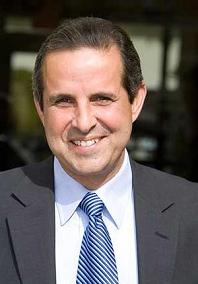 In a move to expand its renewable wind energy development, while reducing carbon emissions, Minnesota Power has announced a plan to buy a North Dakota power line and use that infrastructure to move wind-generated electricity.
In a move to expand its renewable wind energy development, while reducing carbon emissions, Minnesota Power has announced a plan to buy a North Dakota power line and use that infrastructure to move wind-generated electricity.
This article from Finance and Commerce says that the Duluth-based company has already been buying about half of the coal-generated power that has been moving through the line:
The transmission line will instead be used to pipe wind power to Minnesota customers. Mullen said the majority of Minnesota Power’s energy is derived from coal, and the transition will help the company meet the state standard of 25 percent renewable energy. The plan is to transfer the line’s the power source from coal to wind over the course of a decade, shifting to 100 percent wind energy by 2025.
“We’re finding it very competitive right now to go out and find the right renewable energy mix,” including power from water, wind and wood, [vice president of marketing and public affairs with Minnesota Power Pat] Mullen said. “This project alone should get us to, and probably exceed, our renewable energy goal.”
Minnesota Power owns two 50-megawatt wind farms near Young Unit 2 that are already up and running.
Mullen said the utility plans to begin developing several hundred megawatts of new wind generation near Center, N.D., once the transmission line purchase is complete.
Minnesota Power serves 141,000 retail customers, as well as some of the biggest industrial companies in the country.


 One of the fixtures of Boston Harbor are the World War II-era amphibious landing vehicles, affectionately known as “ducks.” Those tourist-carrying ducks are going to have more than water rolling off their backs… they’ll have carbon emissions rolling away as they switch to cleaner burning biodiesel.
One of the fixtures of Boston Harbor are the World War II-era amphibious landing vehicles, affectionately known as “ducks.” Those tourist-carrying ducks are going to have more than water rolling off their backs… they’ll have carbon emissions rolling away as they switch to cleaner burning biodiesel. The $300,000 vehicles initially will run on a B5 biodiesel fuel blend that’s 5 percent vegetable oil, according to director of vehicle maintenance Tony Cerulle. The vehicles’ manufacturer will only cover the one-year warranty for their diesel engines if that mix is used.
The $300,000 vehicles initially will run on a B5 biodiesel fuel blend that’s 5 percent vegetable oil, according to director of vehicle maintenance Tony Cerulle. The vehicles’ manufacturer will only cover the one-year warranty for their diesel engines if that mix is used. A Colorado biodiesel producer is following its commitment to making the green fuel by moving its headquarters into a green building. Blue Sun Biodiesel has moved into one of just 26 Leadership and Energy and Environmentalism Design (LEED)-certified buildings in the world.
A Colorado biodiesel producer is following its commitment to making the green fuel by moving its headquarters into a green building. Blue Sun Biodiesel has moved into one of just 26 Leadership and Energy and Environmentalism Design (LEED)-certified buildings in the world.  IEA estimates that biofuels will account for nearly two-thirds of the non-OPEC oil supply growth this year, or more than 1.5 million gallons per day.
IEA estimates that biofuels will account for nearly two-thirds of the non-OPEC oil supply growth this year, or more than 1.5 million gallons per day. Sen. John Thune (R-SD) plans to introduce a bill this week that would let buyers of cars or trucks capable of running on up to 85 percent ethanol enriched fuel claim a $1,000 tax credit.
Sen. John Thune (R-SD) plans to introduce a bill this week that would let buyers of cars or trucks capable of running on up to 85 percent ethanol enriched fuel claim a $1,000 tax credit.  According to Lampert, NEVC has discussed the idea in the past considering the federal income tax credits that are provided to vehicles that are capable of operating on propane, natural gas, electricity, and hybrid vehicles but had decided not to push the issue since “automakers producing FFVs don’t currently add additional costs to the retail price of these products.”
According to Lampert, NEVC has discussed the idea in the past considering the federal income tax credits that are provided to vehicles that are capable of operating on propane, natural gas, electricity, and hybrid vehicles but had decided not to push the issue since “automakers producing FFVs don’t currently add additional costs to the retail price of these products.” According to the
According to the  Unlike sugarcane, sweet sorghum can be grown in many different areas. It is the world’s fifth largest grain crop—behind rice, corn, wheat and barley – grown on more than 107 million acres in 99 countries with United States, Nigeria, India, China, Mexico, Sudan and Argentina being the leading producers.
Unlike sugarcane, sweet sorghum can be grown in many different areas. It is the world’s fifth largest grain crop—behind rice, corn, wheat and barley – grown on more than 107 million acres in 99 countries with United States, Nigeria, India, China, Mexico, Sudan and Argentina being the leading producers. The City of Miami is moving forward with plans to run a thousand of its vehicles on biodiesel.
The City of Miami is moving forward with plans to run a thousand of its vehicles on biodiesel. Green Star Products has released a report that shows the company’s progress in the new field of algae-based biodiesel.
Green Star Products has released a report that shows the company’s progress in the new field of algae-based biodiesel. Phase I now is complete and has been successful in controlling the most important variables in algae production, i.e. temperature of water in large systems, salinity (salt content), evaporation, pH (acidity-alkalinity) and most all initial costs of construction.
Phase I now is complete and has been successful in controlling the most important variables in algae production, i.e. temperature of water in large systems, salinity (salt content), evaporation, pH (acidity-alkalinity) and most all initial costs of construction. Minnesota Gov. Tim Pawlenty has signed into law a measure that will increase his state’s biodiesel mandate from 2 percent currently to a whopping 20 percent by 2015.
Minnesota Gov. Tim Pawlenty has signed into law a measure that will increase his state’s biodiesel mandate from 2 percent currently to a whopping 20 percent by 2015. The news was welcomed, obviously, by the
The news was welcomed, obviously, by the